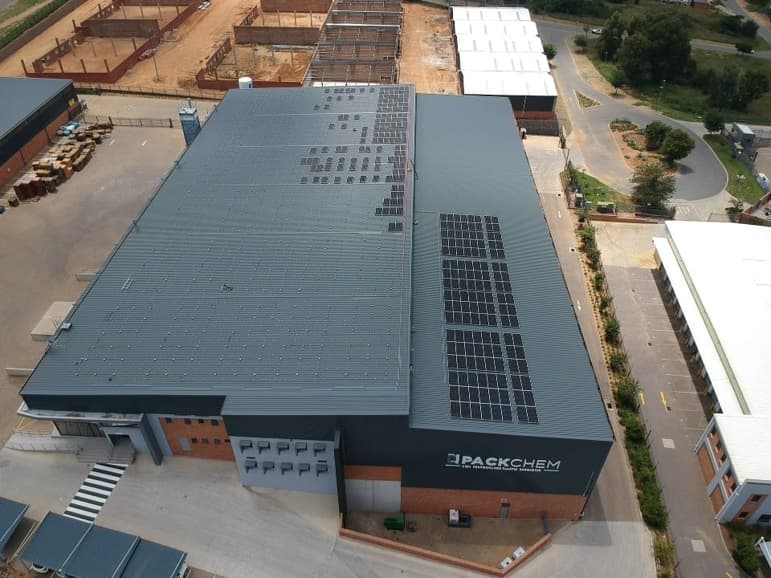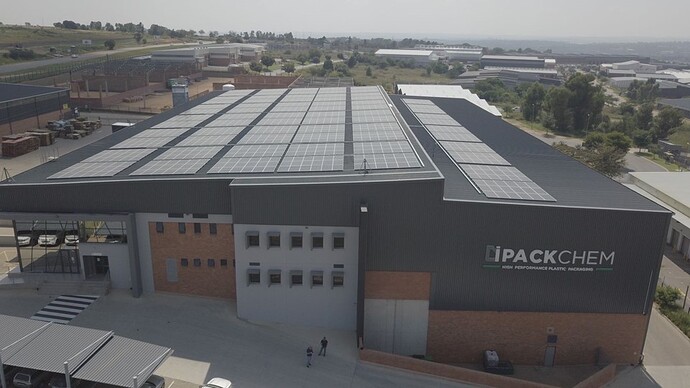I’m sure I wasn’t the only one initially thinking that I would simply have a grid tie system and feed excess power back into the grid…
Now quite a few years later I’ve been put off that idea. But now I’m contemplating a variation of this by not feeding back into the grid with no storage. (This saves plenty on the investment required)
I’ve been thinking much the same lately, but in a multi (slight pun intended) phase approach.
I think we all eventually want battery storage, firstly for load shedding but then also for saving on the electricity bill, but obviously battery storage is the expensive part.
The way my thinking is now, if I had to install a system today, as phase one I’ll install a grid tied or AC PV inverter like a Fronius, inverter, solar panels, no storage. Advantage is easier on the budget, of course this will work best if you can move the majority of your heavy loads to day time. Disadvantage of course is no backup, so you’ll still have load shedding.
As phase two as budget allows down the line I’ll then add a Victron Inverter and battery in a microgrid config, then you can start taking care of loads at night, you have your backup during load shedding etc.
Then phase three more batteries, more PV if needed etc.
That is why I only have 4.8 kWh batteries but expanded the solar array to 6.5 kWp ( no more roof space space ), will wait for funds to build up and battery prices to come down
Indeed! One doesn’t want to make a choice that prevents you expanding your system in future. Easier said than done though because without having your initial system up and running you won’t know what its shortcomings are…
I think this is the reason for the churn of solar equipment (except PV panels)
People install a system that they think will cut it but then it disappoints and it gets replaced by a bigger and better one…
I initially thought to go light on storage but in the end got 10kWh with my 6.37kWp panels and 8kW inverter. Almost half our domestic consumption (even after timing geysers and pool to peak production time). I modelled payback with zero, one and two batteries and the best ROI and shortest payback on my case was with two batteries. We have 500kWp grid-tied / non-storage system at work. Works perfectly as we consume every bit of power generated. Gives a very desirable payback but the downside (big one) is no power during loadshedding.
Interesting! Sounds like you have two systems. Please provide details of your 500kW grid-tie system 
I keep coming back to these Lithium powerpacks. Like the Ecoflow, or the FlexoPower, or the Bluetti. They pack an impressive amount of features, lets you run a smallish television (a 32" LCD needs a mere 40W or so) and a few lamps, charge some phones, keep the internet going…
I think one can make a compelling case for an AC-coupled system, and a small power pack to get through load shedding. Some of these can be extended to add more battery capacity too, or you can plug in a solar panel…
Work environments lend themselves to this model since they are typically a daytime activity: you generate and consume solar power at the same time.
Sure! At the moment I think trying to power every last thing in your house is a pipe dream. There are the off grid aficionados who manage this but the cost is huge.
The middle road of remaining on the grid and generating solar power which reduces your electricity consumption is much easier on the pocket. This can even be done without storage.
However there’s no ‘one size fits all’ solution. Each house has different power requirements.
@Richard_Mackay indeed “I” have two systems … we went partially solar at work around this time last year, which sparked my interest to try it at home as well.
The work system is 502kWp - just over 1400x 350W JA panels feeding 5 x 100kW SolarEdge inverters. We are a specialised blow-moulding company with a fairly stable 600-700kW draw, 24/7. So it was a perfect candidate for a grid-tied solution. See some pictures below (had to go back to 3 October 2021 to find a perfect day’s production with zero cloudcover, loadshedding or interrupted production).

Europe is pretty much grid tie and no storage. Friends in the Netherlands couldn’t even tell me what they had… Just that “it” (the box in the garage) saved them a lot of money. I had to take a look myself 
OK: They don’t have loadshedding!
Do they know how much money it saves them? Or do they only know if it’s not working then the electricity bill is high?
Also does their system feed back into the grid??
I don’t know how much they save but its Grid tie with Feed in… everyone feeds in and I think the electricity supplier installed the system at no cost. They just get a % of feed in benefit as a reduced bill.
Very first world 
Of course they also have multiple suppliers (home owners can often choose between a few), and a whole heap of wheeling is done, with some of the PV being generated on your roof (with the equipment they installed) being sold to other consumers in your neighbourhood.
Indeed very first world.
I am also doing something like this at the moment with a Sunsynk 5kw system but not feeding to the grid in JHB. After having installed sunsynks now, a friend of a friend approached me for help. We bought the inverter 17th December and then all the companies I could buy from closed. So we have 6 Canadian solar panels, mounted and the inverter. I told him, lets install anyway during the break. We had ordered another 6 Canadian, they arrive in mid Jan. We are looking at what batteries to buy at best cost/usage. Would like around 6 kwh, budget allowing. We installed the inverter and it uses the panels to complement the power used on the house during the day. At night it can obviously only use City Power. Everything is on Load, and because we have the CT its working pretty well. If there is good sun it uses no JHB City power.Although we planned to have batteries its already starting to pay for the investment.



